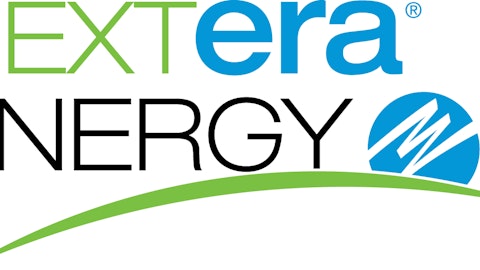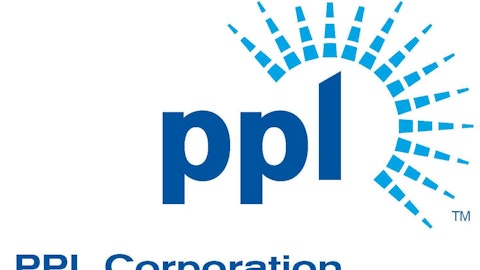PPL Corporation (NYSE:PPL)
“PPL Corporation, an energy and utility holding company, engages in the generation, transmission, distribution, and sale of electricity to wholesale and retail customers in the United States and the United Kingdom. The company operates in four segments: Kentucky Regulated, U.K. Regulated, Pennsylvania Regulated, and Supply. It is also involved in the distribution and sale of natural gas in Kentucky. In addition, the company develops renewable energy projects; and provides energy-related products and services to commercial and industrial customers. As of December 31, 2012, it had approximately 19,000 megawatts of generation capacity; and delivered electricity and natural gas to approximately 10.5 million end-users. PPL Corporation was founded in 1920 and is headquartered in Allentown, Pennsylvania.” Description courtesy Capital IQ
The following Earnings and Price Correlated Graph illustrates that historically PPL Corp’s share price could be purchased at a P/E ratio of 15 or less since 2004 (Note: the orange line on the graph depicts a PE of 15). However, as indicated by the red circle on the graph there was a brief span of a year or so when PPL Corporation (NYSE:PPL)’s P/E ratio was significantly above the orange line. At its peak, instead of a normal P/E ratio of 15 or less (the orange line), the black monthly closing stock price line uncharacteristically rose significantly above the 15 P/E (2007-2008). Later I will showcase the devastating results that this caused for long-term shareholders that unwittingly purchased this utility when its price was too high.
However, before I move on, a few more comments on the Earnings and Price Correlated Graph are in order. The pink line on the graph plots dividends per share, the green shaded area below the pink line illustrates the payout ratio (the percentage of earnings paid to shareholders). My objective in focusing the reader’s attention to the dividend line is to illustrate both the consistency and the low growth rate of PPL Corp’s dividend record. In other words, their dividend was similarly steady as the interest coupon you might expect from a bond. Also, focus on the low rate of earnings growth achieved over this timeframe.

Since the black monthly closing stock price was initially below the orange line indicating a starting P/E ratio of less than 15, the reader should expect that capital appreciation would correlate closely to the operating earnings growth rate. However, the initial low valuation increased capital appreciation to 3.6%, slightly above the operating earnings growth rate of 2.3%.
Moreover, and importantly as it relates to this article on utility stocks, the company’s steady and growing dividend allowed shareholders to exceed the return on the S&P 500 when the dividends are tallied and included. Therefore, purchasing PPL Corp when valuation was sound resulted in attractive, and for the many reasons already stated in the article, relatively safe and acceptable long-term returns.

In contrast, let’s look at what would have happened to any shareholders that unwisely or unwittingly purchased PPL Corp when valuation was excessive. At the beginning of 2008, PPL Corp’s P/E ratio had ballooned to approximately 20. As you will soon see, this also was a time when PPL Corp’s current yield was only 2.5%, significantly below a more normal 4% to 5% level when valuation was sound.

The results of paying too much for this quality utility were devastating. An original $10,000 investment on December 31, 2007 would today only be worth $5903.38. That represents a compounded annual loss of principal of approximately 8.9% per annum. Even when dividends are added, long-term shareholders still suffered unacceptable losses. It would be hard to argue that losing approximately half your principal was a safe investment. Therefore, I cannot emphasize enough the importance of being very careful regarding the valuation you pay before investing in a utility stock.





